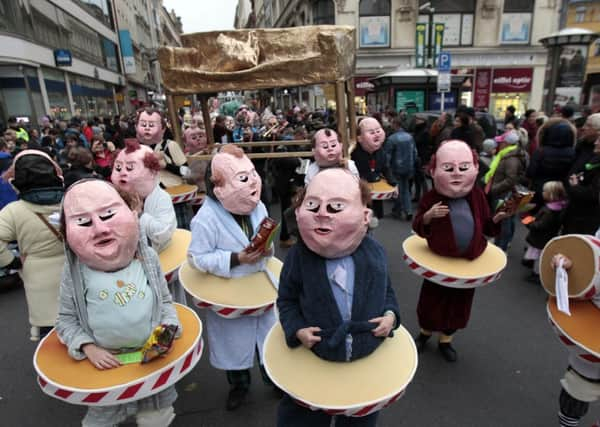Free Europe faces up to 25 years of change


The challenges facing those countries a quarter of a century ago were formidable to say the least: tackling debt, restructuring command economies, and the need to build a democratic infrastructure and transform the state.
The likes of Poland, Romania and Czechoslovakia (as it was then) faced a Herculean task, and success was by no means certain. Economies could have collapsed, and political instability and extremism could have filled the void created by the sudden departure of communism.
Advertisement
Hide AdAdvertisement
Hide AdBut 25 years on, a visit to almost any former Eastern Bloc capital makes obvious – often in gaudy neon – that changes were made and, for the most part, were successful.
Warsaw, perhaps the greyest capital under communism, has pulled in vast amounts of foreign capital over the past 25 years, prompting a building boom that has transformed the city into a thriving cosmopolitan centre.
Prague has undergone an almighty facelift, which has revitalised a beauty that had been left to crumble under communism. Although some claim to miss the Prague of 1990 that was minus the tourist hordes, Starbucks and sky-high prices, few will deny the city has changed for the better.
The people of eastern Europe have seen their economies start to catch up on those of the West. Regional powerhouse Poland was the only EU country to avoid recession during the economic crisis, and is losing the “post-communist” tag as it becomes a mainstream European economy. At the same time increased wealth has allowed people to purchase consumer goods, take foreign holidays and buy their own homes.
But there have also been problems. Economic success has been patchy and the pace of growth has been uneven. The tide of migration from eastern to western Europe since EU expansion in 2004 bears sad testament to the fact that many eastern Europeans see a brighter future in the jaded economies of the West.
Corruption still blights central Europe. Romania and Bulgaria always come near the top on corruption indices, and the scourge has helped undermine economies and people’s faith in politicians and democratic institutions. However, the fact Romania has recently seen a spate of high-level corruption trials suggests it has started to get to grips with problem.
A more recent criticism of eastern Europe is that it is falling under the thrall of Moscow again, possibly due to security fears created by the crisis in Ukraine. Celebrations this week in Prague marking the 25th anniversary of the Velvet Revolution were overshadowed by demonstrators heckling and throwing eggs at Milos Zeman, the Czech president, who many accuse of becoming too close to Moscow. Protesters in Hungary, who recently took to the streets, have voiced the same concerns.
There may be substance to these accusations, but what is important is that they are aired in an environment that was inconceivable before the revolutions of 1989. Zeman may even get the boot come the next presidential elections.
It’s a fate his Communist predecessors never had to worry about – impressive evidence in itself of how far European history has moved on in the past 25 years.